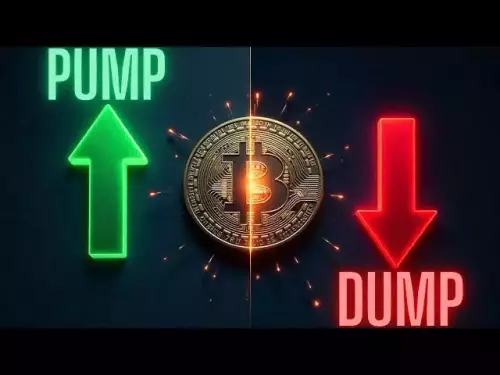-
 bitcoin
bitcoin $114206.058833 USD
-0.82% -
 ethereum
ethereum $4129.796871 USD
-1.31% -
 tether
tether $0.999964 USD
0.00% -
 xrp
xrp $2.640265 USD
-0.68% -
 bnb
bnb $1141.700384 USD
-0.18% -
 solana
solana $200.380665 USD
-2.05% -
 usd-coin
usd-coin $0.999888 USD
0.01% -
 dogecoin
dogecoin $0.200706 USD
-3.43% -
 tron
tron $0.299112 USD
-0.60% -
 cardano
cardano $0.668491 USD
-2.72% -
 hyperliquid
hyperliquid $46.924669 USD
-2.72% -
 chainlink
chainlink $18.286013 USD
-2.66% -
 bitcoin-cash
bitcoin-cash $555.734639 USD
-0.58% -
 stellar
stellar $0.323999 USD
-2.74% -
 ethena-usde
ethena-usde $0.999169 USD
0.00%
What is the reason for the OKX API call failure?
OKX API call failures may originate from client-side issues (incorrect keys, network problems, bad formatting) or server-side problems (outages, high traffic, internal errors). Thorough troubleshooting, including checking your code and OKX's status, is crucial.
Mar 18, 2025 at 09:36 am
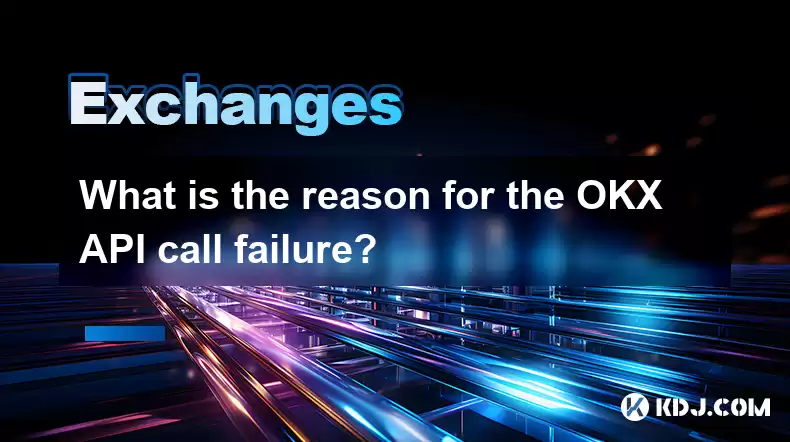
- OKX API call failures can stem from a variety of sources, both on the client-side (your code and network) and the server-side (OKX's infrastructure).
- Common client-side issues include incorrect API keys, rate limiting violations, network connectivity problems, and flawed request formatting.
- Server-side problems encompass OKX platform outages, maintenance, high traffic loads, and internal errors.
- Troubleshooting involves systematically checking each potential cause, starting with the simplest and most common ones.
- Effective error handling in your code is crucial for identifying and managing API call failures gracefully.
What is the reason for the OKX API call failure? This question, common among developers integrating with the OKX exchange, can be frustrating. A failure doesn't always mean your code is broken; it could be an issue with OKX's servers or your network connection. Let's explore the various reasons for these failures.
Client-Side Reasons for OKX API Call Failures:Incorrect API Keys: This is the most frequent cause. Double-check your API key and secret are correctly entered and haven't expired. A single misplaced character can lead to a failure. Ensure you're using the correct environment (testnet or mainnet) keys.
Rate Limiting Exceeded: OKX, like all exchanges, imposes rate limits to prevent abuse and maintain system stability. If you exceed the allowed number of requests within a specific timeframe, your calls will be rejected. Consult OKX's API documentation for details on their rate limits.
Network Connectivity Issues: A simple problem, but often overlooked. Ensure your system has a stable internet connection. Network problems like firewalls, proxies, or DNS resolution failures can prevent your requests from reaching the OKX servers. Try accessing other websites to confirm your internet is working correctly.
Improper Request Formatting: The structure of your API requests must adhere strictly to OKX's specifications. Incorrect HTTP methods (GET, POST, etc.), missing parameters, or wrongly formatted JSON payloads will all result in failure. Carefully review OKX's API documentation for precise formatting requirements.
Authentication Errors: Even with correct API keys, authentication issues can arise. These may involve issues with the signature generation process if using methods requiring signatures for security. Verify the implementation of your signing algorithm against OKX's documentation.
Incorrect Endpoint: Using the wrong URL endpoint for your API request will lead to failure. Ensure you are targeting the correct endpoint for the specific action you want to perform. Double-check the URL for typos.
Server-Side Reasons for OKX API Call Failures:OKX Platform Outages: Occasionally, the entire OKX platform might experience outages due to unforeseen circumstances. Check OKX's official website or social media channels for announcements regarding any planned or unplanned downtime.
High Traffic Loads: During periods of high trading volume or market volatility, OKX's servers might struggle to handle the influx of requests, leading to temporary API failures. This is often outside your control.
OKX Server-Side Errors: Internal errors within OKX's infrastructure can also cause API failures. These are often temporary and resolve themselves after some time. Check the error messages returned by the API for clues about the nature of the problem.
Maintenance: Scheduled maintenance on OKX's servers can temporarily disable API access. Check OKX's announcements for scheduled maintenance periods.
Unexpected Errors: There may be unexpected issues within OKX's system that cause API failures, despite the absence of public announcements or explanations.
Troubleshooting Steps:- Check your API keys and secret for accuracy.
- Verify your network connectivity.
- Examine your API request for correct formatting and parameters.
- Check OKX's status page for any reported outages or maintenance.
- Review OKX's API documentation for rate limits and other restrictions.
- Implement robust error handling in your code to catch and log API errors.
- Test your code with a simple request to rule out more complex problems.
- Consider using a network monitoring tool to identify network-related issues.
A: Systematically check each potential cause listed above. Begin with the simplest, like verifying your API keys and network connection. If problems persist, examine your request formatting and check OKX's status page.
Q: What specific error messages do I look for?A: OKX's API documentation should detail the specific error codes and messages returned in case of failure. These codes will help pinpoint the cause. Common errors include authentication errors, rate limit exceeded errors, and server errors.
Q: How can I handle API call failures gracefully in my code?A: Implement try-except blocks to catch exceptions during API calls. Log the error details for debugging purposes and provide informative feedback to the user. Consider retry mechanisms with exponential backoff to handle temporary failures.
A: Network debugging tools (like Wireshark or browser developer tools) can help analyze network traffic and identify issues with your requests. API testing tools can help automate testing and identify problems with your API interactions.
Q: What is the difference between testnet and mainnet API keys?A: Testnet keys are for testing your code against a non-production environment. Mainnet keys are for use with the live exchange and handle real funds. Never use your mainnet keys in a testing environment.
Disclaimer:info@kdj.com
The information provided is not trading advice. kdj.com does not assume any responsibility for any investments made based on the information provided in this article. Cryptocurrencies are highly volatile and it is highly recommended that you invest with caution after thorough research!
If you believe that the content used on this website infringes your copyright, please contact us immediately (info@kdj.com) and we will delete it promptly.
- Essex Post Office, 5p Coins, and King Charles: A Royal Mint Revelation!
- 2025-10-23 10:30:16
- Waymo's Newark Airport AV Tests: Alphabet's AI Gamble Pays Off?
- 2025-10-23 10:30:16
- King Charles 5p Coins: A Royal Flush in Your Pocket?
- 2025-10-23 10:35:18
- Solana, Crypto Advisory, and Forward Industries: A New York Minute on the Future of Finance
- 2025-10-23 08:51:22
- MAGACOIN: Ethereum Whales Dive into the Hottest Presale of 2025
- 2025-10-23 08:51:22
- Kadena's End of the Road? KDA Token Plummets Amid Project Abandonment
- 2025-10-23 08:55:34
Related knowledge

How to get the highest verification level on Kraken?
Oct 26,2025 at 05:37pm
Understanding Kraken’s Verification Tiers1. Kraken offers multiple verification levels, each unlocking additional features and higher trading limits. ...

What to do if you sent crypto to the wrong address from Kraken?
Oct 28,2025 at 06:55am
Immediate Steps to Take After Sending Crypto to the Wrong Address1. Verify the transaction details immediately through your Kraken account history. Ch...
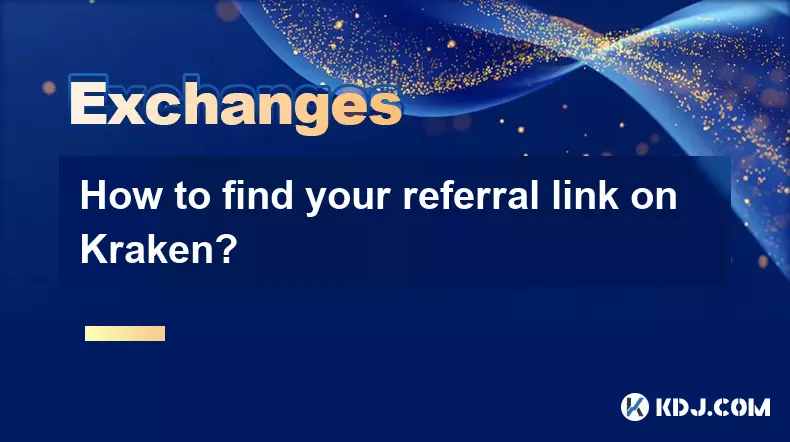
How to find your referral link on Kraken?
Oct 25,2025 at 12:09pm
Accessing Your Kraken Account Dashboard1. Navigate to the official Kraken website and log in using your registered email and password. Two-factor auth...
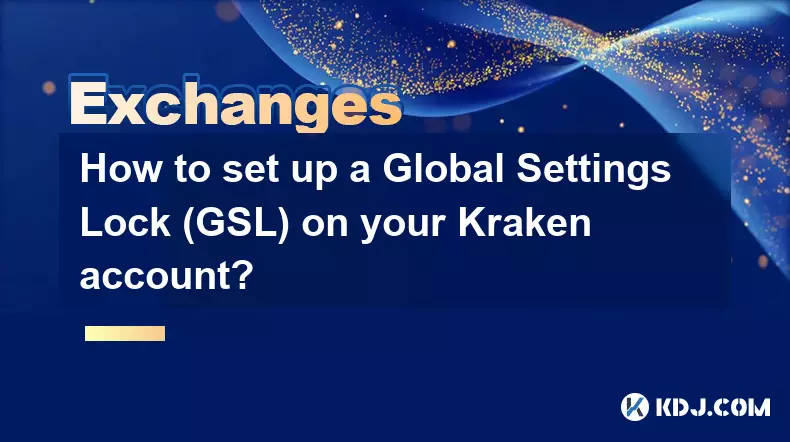
How to set up a Global Settings Lock (GSL) on your Kraken account?
Oct 25,2025 at 08:31am
Understanding Global Settings Lock (GSL) on Kraken1. The Global Settings Lock (GSL) is a security feature offered by Kraken to protect user accounts f...

How to avoid high withdrawal fees on Kraken?
Oct 26,2025 at 09:36am
Understanding Kraken's Fee Structure1. Kraken operates on a tiered fee model that depends on the user’s trading volume over the last 30 days. The high...
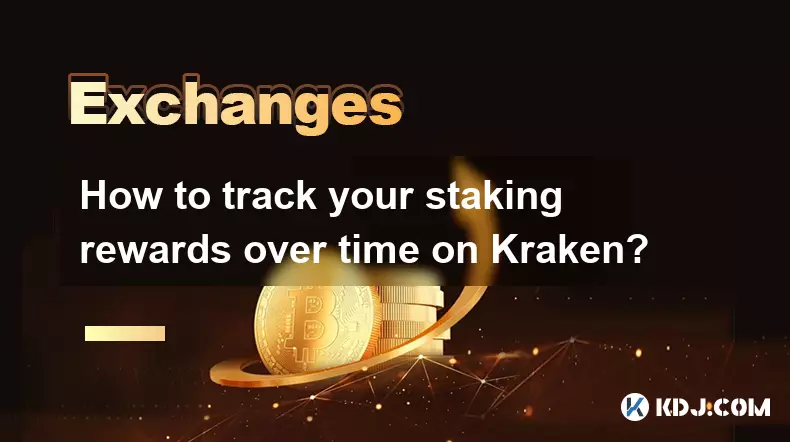
How to track your staking rewards over time on Kraken?
Oct 26,2025 at 04:54am
Understanding Staking Rewards on Kraken1. Kraken supports staking for various cryptocurrencies, allowing users to earn passive income by locking their...

How to get the highest verification level on Kraken?
Oct 26,2025 at 05:37pm
Understanding Kraken’s Verification Tiers1. Kraken offers multiple verification levels, each unlocking additional features and higher trading limits. ...

What to do if you sent crypto to the wrong address from Kraken?
Oct 28,2025 at 06:55am
Immediate Steps to Take After Sending Crypto to the Wrong Address1. Verify the transaction details immediately through your Kraken account history. Ch...

How to find your referral link on Kraken?
Oct 25,2025 at 12:09pm
Accessing Your Kraken Account Dashboard1. Navigate to the official Kraken website and log in using your registered email and password. Two-factor auth...

How to set up a Global Settings Lock (GSL) on your Kraken account?
Oct 25,2025 at 08:31am
Understanding Global Settings Lock (GSL) on Kraken1. The Global Settings Lock (GSL) is a security feature offered by Kraken to protect user accounts f...

How to avoid high withdrawal fees on Kraken?
Oct 26,2025 at 09:36am
Understanding Kraken's Fee Structure1. Kraken operates on a tiered fee model that depends on the user’s trading volume over the last 30 days. The high...

How to track your staking rewards over time on Kraken?
Oct 26,2025 at 04:54am
Understanding Staking Rewards on Kraken1. Kraken supports staking for various cryptocurrencies, allowing users to earn passive income by locking their...
See all articles























